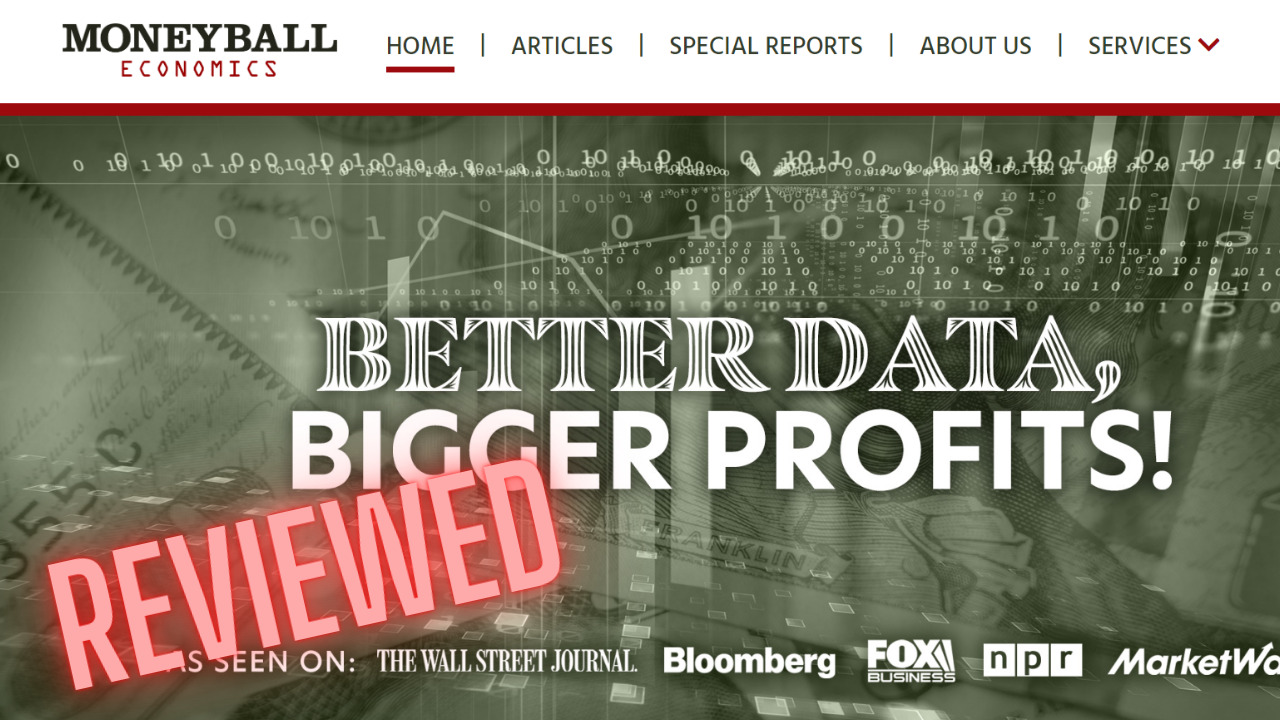
Moneyball Economics is an investing publisher that comes from Andrew Zatlin.
He claims he can help you find sectors that are hot and worth investing in.
Is he telling the truth, or is this all one big scam?
We'll get to the bottom of this question in this review.
Additionally, we'll look at any red flags that I find, and you'll get an overview of everything that I find.
Let's get started!
Moneyball Economics Summary
Creator: Andrew Zatlin
Price to join: $199 to $5000
Do I recommend? No.
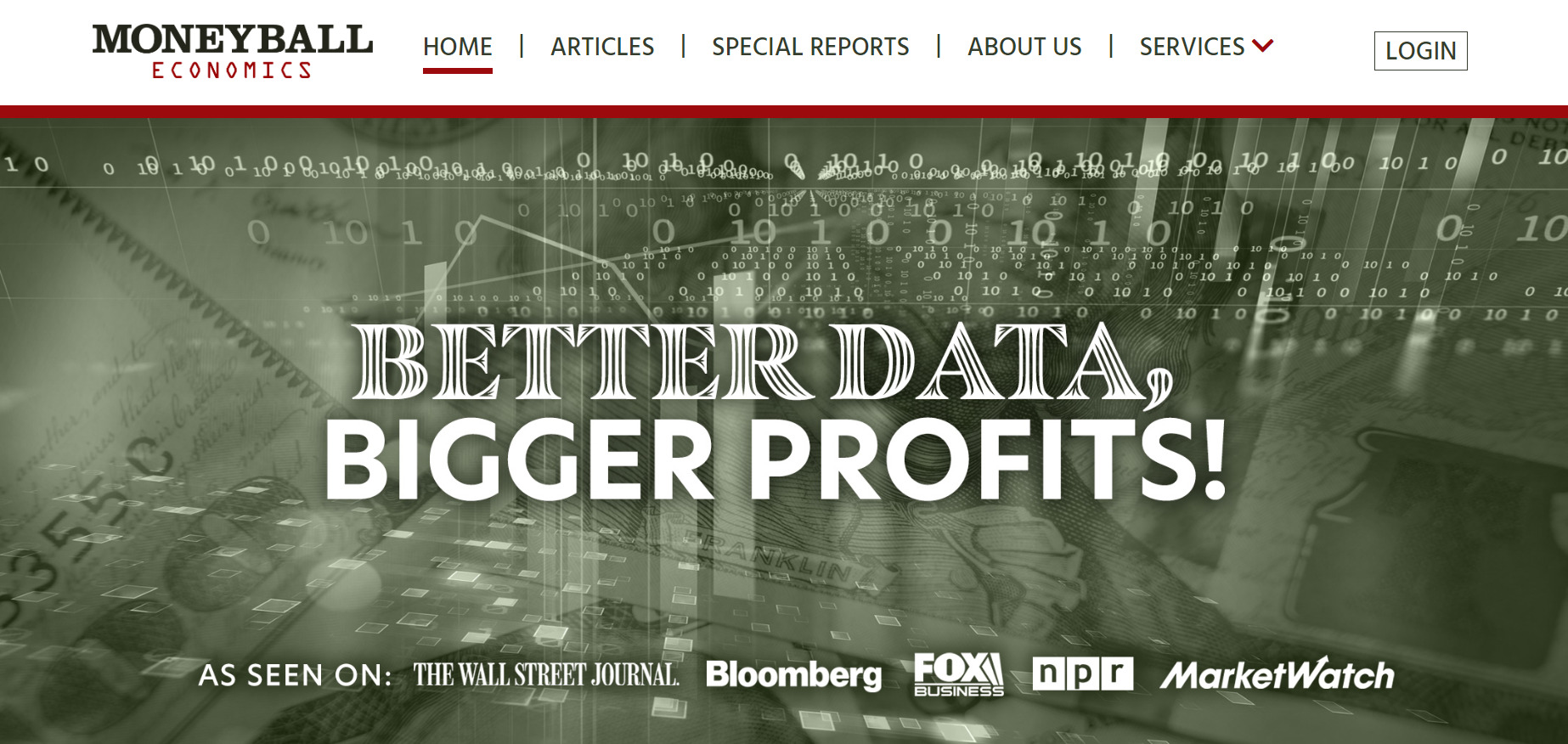
Overall rating: 2/5
Moneyball Economics is your typical investing publisher.
It's owned by a much larger company called MarketWise, which I don't like too much.
They're known for putting out newsletters that don't beat the market, and they're very aggressive with their marketing.
Customer reviews for the flagship newsletter at Moneyball are pretty bad already, and the other service is way too expensive at $5000 per year.
You'll get sold on big returns that never materialize.
There's really nothing to like here.
Better opportunity: I've reviewed all the top places to get high return stock ideas. To see my favorite (which is extremely affordable), click below:
Moneyball Economics Is Owned By MarketWise
Before we get into what Moneyball Economics is, there's something you need to know about this newsletter.
This is another MarketWise product.
MarketWise is a publicly traded company that formed a couple years ago.
This company is run by very predatory people, and most of the publishers under MarketWise aren't very good.
It's important you know this is a MarketWise newsletter because they all function the same way.
They sell their service by putting out manipulative sales presentations and overhyping how well an investment can do.
For example, Andrew ran one of these sales presentations where he claimed one of his investment ideas could get 26,000% returns:
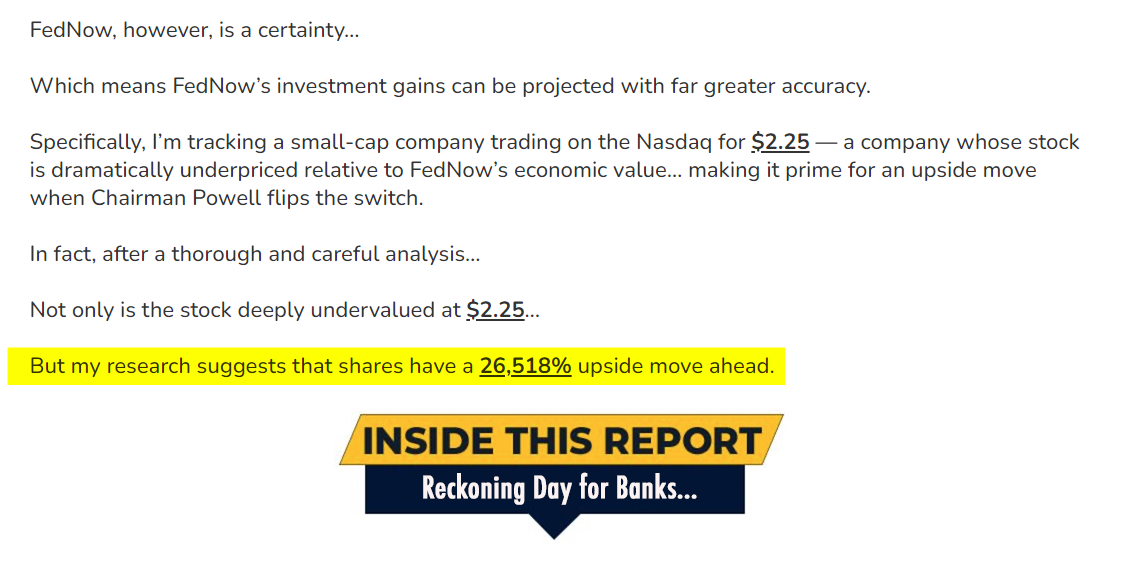
The odds of this happening are about zero percent.
But making promises like this will get people to buy, and that's all MarketWise and people like Andrew care about.
Almost every service from MarketWise trails the market, and many just straight-up lose money.
So if you can, avoid buying from them.
What Is The Investment Strategy?
There are two services at Moneyball Economics, and both have different strategies.
The first is Sector Alpha, and
This newsletter focuses on sectors instead of individual stocks.
So once a month, you'll get a report on the top four sectors, and then you'll get four recommended ETFs to trade in.
However, you will still get individual stock recommendations as well.
For example, back in November 2022, Andrew recommended Altria as a way to beat inflation.
More recently, Andrew has claimed he knows a stock that will benefit from the FedNow program being rolled out by the Federal Reserve.
That's the stock he claims will make more than 26,000% returns.
The second newsletter is called Crash Alert.
Crash Alert is betting against the success of a stock and is a put option service.
A put option is a sort of financial derivatives contract that allows the holder the right, but not the duty, to sell a certain amount of an underlying security at a given price within a specified time frame. This is often referred to as the striking price.
A put option buyer anticipates that the underlying asset will fall below the exercise price before the expiration date. The put option seller, on the other hand, expects that the underlying asset's price will remain stable or increase.
Let us use an example to demonstrate this:
Assume you purchase a put option for 100 shares of Company XYZ for $50 a share, with a strike price of $45. This option may cost $2 per share or $200 for the entire contract (options are normally sold in lots of 100 shares).
If the share price of Company XYZ falls to $40 before your options expire, you have the right to sell 100 shares of XYZ for $45 (despite the current market price of $40), earning a profit of $5 per share less the $2 option fee.
Your option expires worthless if the share price does not fall below $45 (the strike price). In this situation, you would lose the entire $200 investment in the put option.
Put options are used for a variety of purposes, such as speculating on price reductions, hedging existing long positions against price dips, or gaining ownership of an underlying at a reduced effective price if the option is executed.
Recommended: The Best Place To Get Stock Picks
How Does Sector Alpha Work?
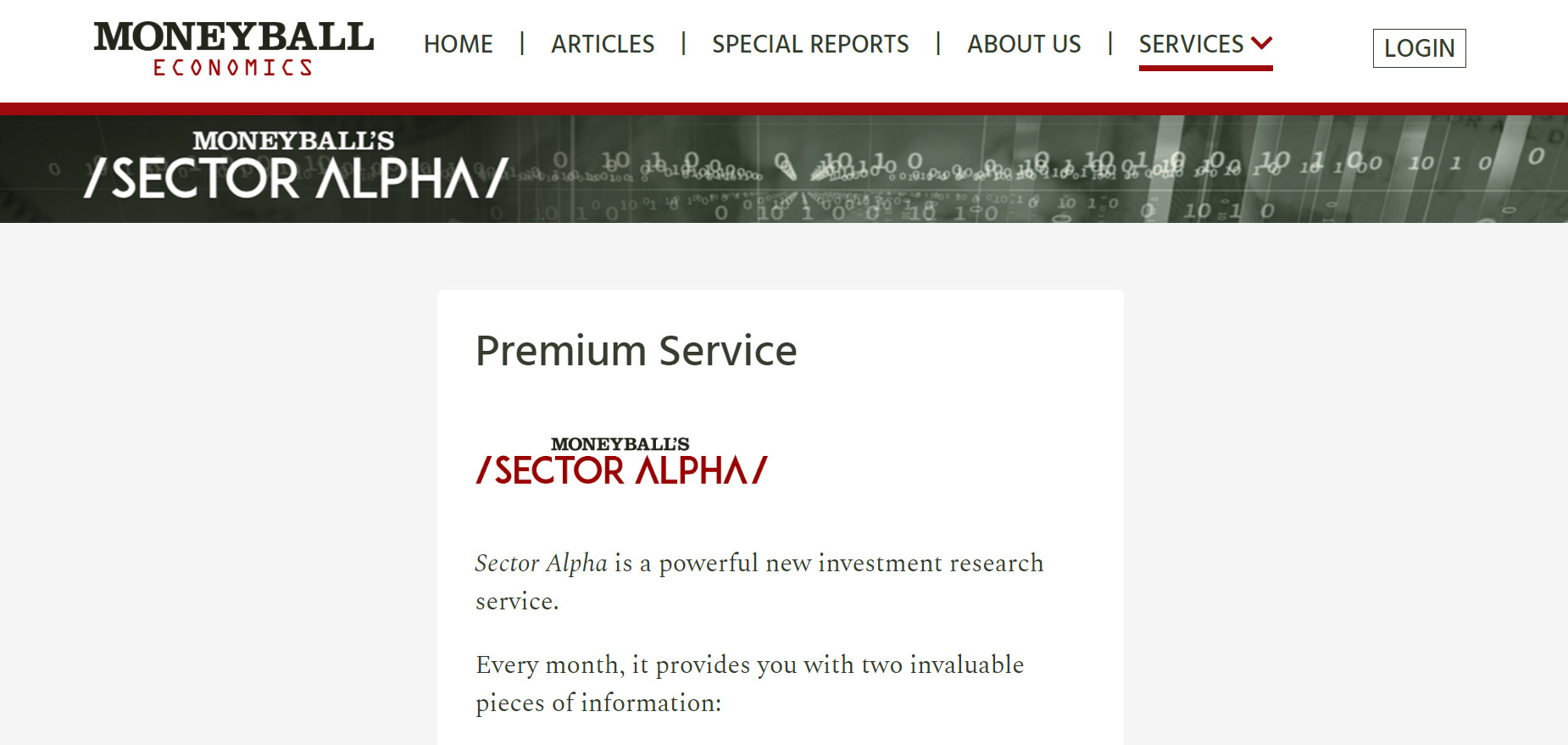
This is your typical investing newsletter, and there are a million other services that function in the same exact way.
Here's a breakdown of everything that you get:
Full-Year Access to Sector Alpha
This is the main selling point of the newsletter.
Every single month, you'll get a new newsletter with advice on what sectors to invest in.
In these newsletters, you'll get ETF and stock advice.
Additionally, you'll get updates on the market as a whole.
Model Portfolio
This is another main selling point of this newsletter.
Once you sign up, you'll get access to all the stocks that Andrew recommends, and you'll get buy prices on the stocks.
Special Reports
The special reports act like sweeteners.
I mentioned in the last section that the current special report for this newsletter is the FedNow special report.
This is a report that supposedly helps you invest in the future digital economy.
How Does Crash Alert Work?
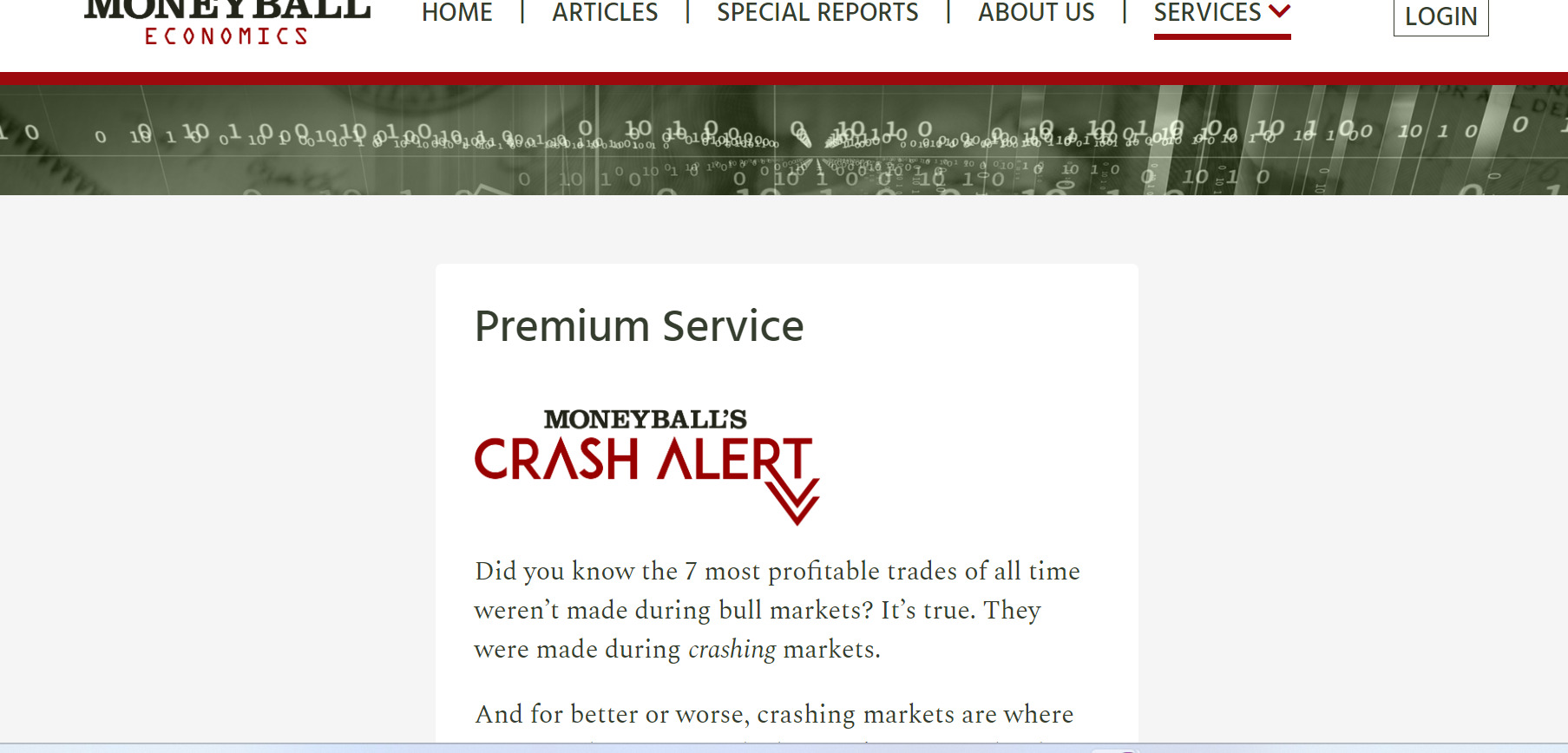
Crash Alert is a little different and is an optional alert service.
I do have a warning about option alert services.
I've reviewed plenty of them, and I don't think I have ever come across one that was positively reviewed.
The problem is that there's time between the option alert being sent out and the time you are able to make the trade.
This means there can be scenarios where Andrew makes money on a trade and you lose money.
If you want to get into options and put options, I would just learn strategies for yourself and then make your own trades.
Buy alerts never seem to work out.
Want The Best Stock Picks Weekly?
I've reviewed the best programs that do this.. to see my top pick, click below:
Moneyball Economics FAQ's
Still have some questions about this publisher?
Here are the answers to any remaining questions you might have:
1) Are the prices fair?
The prices at Moneyball Economics are the same as those at all MarketWise publishers.
They offer a cheap newsletter to get you into the sales funnel.
In this case, the cheap newsletter is Sector Alpha.
This gets you into the sales funnel so they can try and get you to upgrade to Crash Alert, which is $5000.
There's a rule with investing in research: never spend more than 1% of your portfolio on research.
The reason is that if you pay too much for research, you'll eat into your gains, making it impossible to beat the market.
So for Crash Alert to make sense, you'd need $500,000 to invest.
2) Are there refunds?
Another thing MarketWise does is offer refunds on cheap products but not on expensive ones.
So Sector Alpha will come with a good refund policy, but Crash Alert will only have a credit refund you can use on other MarketWise products.
Moneyball Economics makes more money upselling people with Crash Alert, so they'll never cash refunds on that product.
3) How are the customer reviews?
This is a new publisher, so there's not too much out there from customers.
At Stock Gumshoe, seven people have voted on this newsletter, and so far it has a 2.1/5 rating.
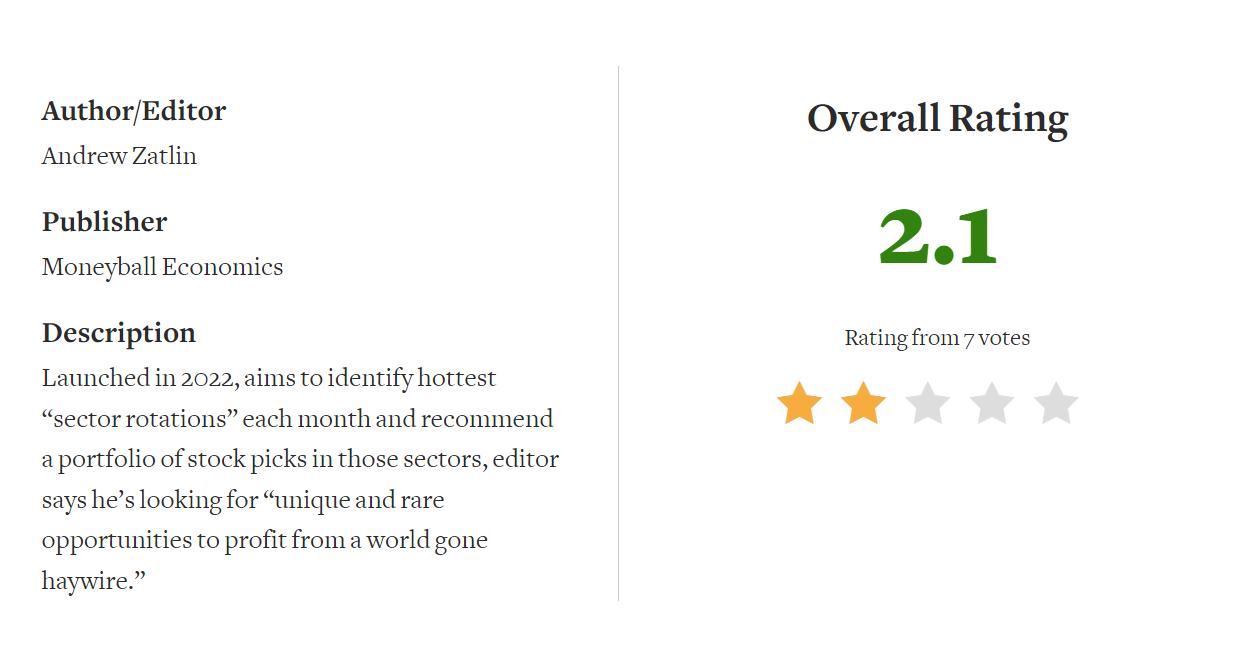
So it's not off to a good start.
But this is completely what I'd expect.
Like I said, these newsletters promise the stars and the moon and almost never deliver.
It rubs people the wrong way.
4) Are there similar newsletters?
Yes, there are many newsletters just like the ones Moneyball Economics offers.
Some include:
- The Distortion Report
- Stansberry Investment Advisory
- TradeStops
- Retirement Watch
- Intelligent income investor
- True Wealth
- The Opportunistic Trader
- Jeff Clark, Trader
- Behind the Markets
- The Oxford Income Letter
- Power Gauge Report
- Chaikin Analytics
As you can see, there's no shortage of people wanting to sell you stock picks.
Recommended: The Best Place to Get Stock Picks
Wrapping Things Up
So that's the end of my review of Moneyball Economics.
I've reviewed many publishers just like this one, and many come from MarketWise.
They are all clones of each other and act in the same way.
Cheap newsletters to get you into the sales funnel, expensive upsells, the same refund policy, the same marketing strategies, constant overpromising on investment returns, and worst of all, bad customer reviews
There aren't too many products I recommend from MarketWise.
They all come with some serious baggage, and they almost all seem to trail the market in performance.
However, there are some good investment newsletters out there.
To see my favorite (which is very affordable), click below:
Get High Return Stocks!
I've reviewed 100+ stock picking services. To learn more about my favorite, click below:
I was sent this Moneyball Economics “opportunity” and read through the sales pitch, but couldn’t help but wonder if it was such an incredible offer, why so many pages to sell you on it? Plus, solid opportunities usually aren’t named after a Hollywood film. 🙂
I really appreciate your post and pointing out the glaring issues with Moneyball Economics. Thank you!
No problem!